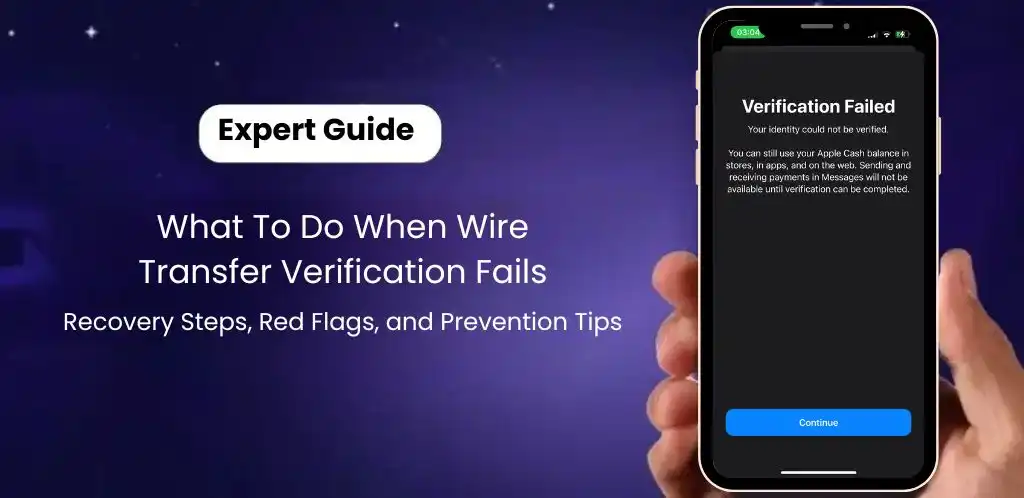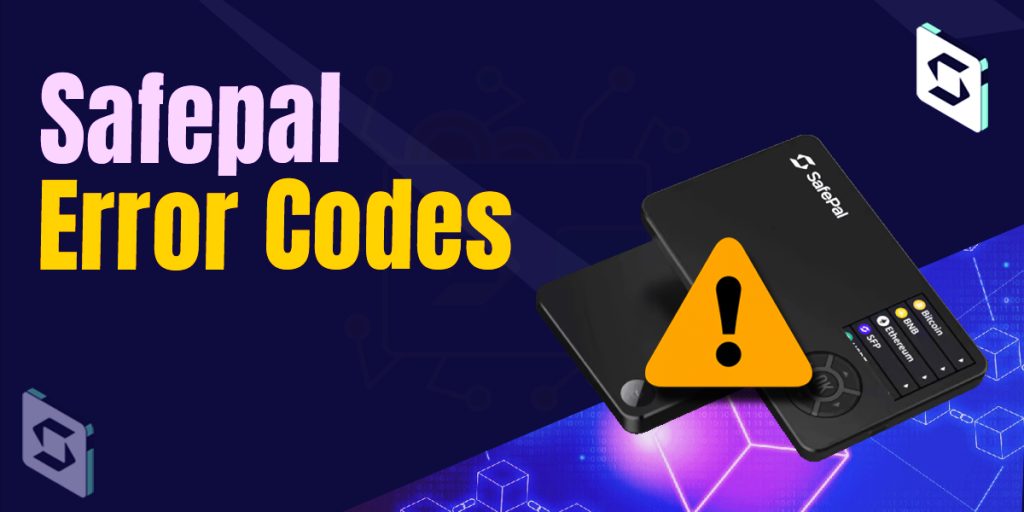Introduction
Sometimes, even after double-checking everything, a wire transfer doesn’t go as planned. Maybe the funds went to the wrong account, or your bank’s verification failed midway. It’s stressful — especially when large amounts or important business payments are involved.
That’s where wire transfer account information verification becomes critical — it’s the step that ensures your money reaches the right hands safely and without errors.
When a bank wire transfer recipient verification fails, every minute counts. The faster you act, the higher your chances of recovering the funds and preventing future issues.
Let’s go step-by-step through what to do, what red flags to look for, and how to protect yourself from it happening again.
Understanding What “Verification Failure” Really Means
Before you panic, it’s important to understand what’s actually happening when your wire transfer account confirmation process fails.
In most cases, a failed verification doesn’t mean the money is lost. It simply means your bank (or the receiving bank) couldn’t confirm some key information — usually about the recipient or their account. And just like reaching out to a crypto support number during a transaction issue, contacting your bank’s wire department quickly can make all the difference when handling wire transfer account information verification problems.
Here are the most common causes:
- The recipient’s account number or routing number doesn’t match the name provided.
- The receiving bank flagged the transfer for security review.
- The account information was incomplete or outdated.
- There’s a possible fraud alert or mismatch in the bank wire transfer recipient verification system.
- The transfer hit a compliance hold or exceeded a set limit.
Knowing why it failed helps you decide your next move — whether that’s contacting your bank immediately or waiting for manual verification to complete.
Read Also : How to Verify Bank Account Details for Secure Wire Transfers
Step 1: Don’t Wait Contact Your Bank Immediately
The first rule is simple: act fast.
Wire transfers move through the banking system quickly, and once funds are received and cleared, reversing them becomes difficult.
Here’s what to do right away:
- Call your bank — speak directly to the wire department (not general customer service).
- Provide the transfer details — date, amount, account number, routing/SWIFT code, and reference number.
- Ask for the IMAD or Fed Reference Number — this unique tracking code helps trace the wire through the system.
- Request a “recall” or “trace” — if funds are still in transit, your bank can attempt to stop or reverse the transfer.
The earlier you report a failed or suspicious wire transfer account confirmation process, the better your chances of stopping any unauthorized movement.
Step 2: Confirm the Recipient’s Details Again
Even if you verified details before sending, it’s worth confirming everything line by line. Many verification failures happen because of small typos or outdated information.
Cross-check the following:
- Account holder’s name (must exactly match what’s on their bank account)
- Account number / IBAN
- Bank name and branch
- Routing / SWIFT / BIC code
- Any intermediary bank information if it’s an international transfer
If your bank wire transfer recipient verification process shows a mismatch between name and number, your bank may automatically hold or cancel the transaction.
This is a built-in fraud prevention feature — not an error.
Step 3: Track the Transfer Status
Once your bank initiates the trace, ask for regular updates.
Each wire transfer passes through a series of checkpoints — your bank, the Federal Reserve (or intermediary network), and the recipient’s bank.
Here’s what you can expect during the tracking process:
- Pending or in review: the transfer is still under verification.
- Rejected or returned: the receiving bank declined it; funds will come back.
- Completed but flagged: the transfer went through but is under fraud review.
Keep a written record of every update and name of the representative you speak with. It may help if you need to file a report later.
Step 4: Watch for Red Flags of Wire Fraud
Sometimes, a verification failure is the first sign of a potential scam or compromised communication.
If you notice any of these warning signs, stop all transactions and alert your bank immediately.
Common Red Flags:
- You received updated wire instructions through email or text right before sending.
- The email address or phone number looks slightly different from your usual contact.
- The recipient insists on urgency or secrecy.
- The bank information belongs to a different city or country than expected.
- You’re asked to verify through a “new” payment portal or link.
Scammers often try to intercept legitimate wire transfers by changing account information at the last moment. That’s why strong bank wire transfer recipient verification procedures — such as callbacks or dual approval — are so important.
Step 5: File a Fraud or Error Report (If Necessary)
If your wire transfer was sent to the wrong account or appears to have been intercepted, file a fraud report immediately.
What to include:
- Date and time of transfer
- Transfer amount and recipient details
- Wire tracking reference (IMAD or Fed number)
- Screenshots or copies of any suspicious messages
- A short written statement describing what happened
Your bank will open an internal investigation and, if needed, escalate it to the receiving institution or regulatory agency.
Even if the funds can’t be instantly reversed, having a paper trail can strengthen your claim.
Step 6: Understand the Recovery Timeline
Every recovery case is different, depending on where the transfer got stuck.
Here’s a general idea of what happens next:
- If funds are still in transit: a recall can usually be initiated within hours or the same business day.
- If funds reached the wrong account: the receiving bank must get the account holder’s consent to reverse, which can take days or weeks.
- If it’s confirmed fraud: banks and agencies like the FBI or local authorities may open a case to trace and freeze funds, depending on the jurisdiction.
Keep communication polite but firm. Follow up every few days, and document everything. Persistence and detailed records often speed up resolution.
Step 7: Strengthen Your Verification Process for Future Transfers
Once the dust settles, take a step back and review what could be improved in your wire transfer account confirmation process.
Here are a few simple but powerful safeguards:
- Always verify through a known phone number, not email.
- Use dual authorization — one person sets up the wire, another approves it.
- Confirm account information directly with the recipient’s bank if large sums are involved.
- Avoid sending funds right after receiving “urgent” instructions.
- Keep previous verified account details saved and question any changes.
Banks use advanced verification technology, but fraudsters are getting smarter too. A human double-check — even 60 seconds of confirmation — can prevent thousands of dollars in losses.
Step 8: How Banks Handle Verification Issues Internally
Understanding what happens behind the scenes gives you perspective.
When a bank wire transfer recipient verification fails, most banks follow this process:
- Automatic alert system flags mismatched or incomplete data.
- Manual review — a human verifier compares name, number, and transaction purpose.
- Hold placed — funds are paused until confirmation or correction.
- Customer contact — you receive a call or message to fix details.
- Retry or return — once corrected, the wire is resent or refunded.
This behind-the-scenes check exists to protect both sender and recipient.
It’s not about slowing your transaction; it’s about ensuring accuracy and preventing fraud.
Step 9: Prevention Tips to Keep Your Transfers Safe
You can’t control every step in the global banking system, but you can create strong personal habits to stay safe.
Everyday Prevention Tips:
- Never rely on emailed wiring instructions alone. Always confirm verbally.
- Set up notifications for any outgoing wire or transfer approval.
- Use banks that offer two-factor or biometric verification.
- Keep your contact list clean. Remove old or unused payees.
- Educate your team or family members — especially those handling business funds.
The truth is, the wire transfer account confirmation process works best when both technology and human caution come together.
Fraudsters can mimic emails and websites, but they can’t fake a direct voice verification call.
Step 10: Create Your Personal Wire Transfer Safety Checklist
To keep things simple, here’s a personal checklist to use before every wire transfer:
Confirm recipient name and account number
Verify routing/IBAN/SWIFT details directly with the recipient
Double-check for last-minute instruction changes
Save and print your wire confirmation receipt
Enable multi-person approval if possible
Call the bank if verification fails or looks suspicious
Treat this checklist as your habit — not just a one-time fix.
Final Thoughts
A failed bank wire transfer recipient verification might feel overwhelming at first, but remember: it’s usually a sign that the system is working to protect you, not failing you.
Whether it’s a minor typo or a potential scam attempt, every verification error is an opportunity to strengthen your process.
Stay calm, act fast, keep detailed notes, and always confirm through trusted channels.
In today’s digital world, your money moves faster than ever — but so do fraudsters. The best defense is not fear, but awareness, routine verification, and a steady process that never skips the basics.
FAQs on Wire Transfer Account Information Verification
What is wire transfer account information verification?
Wire transfer account information verification is the process banks use to confirm that the recipient’s account details — like name, number, and routing information — match correctly before sending funds. It helps prevent fraud, errors, and lost transfers.
Why is verifying account information before a wire transfer important?
Because one wrong digit can send your money to the wrong account. Verification ensures the recipient details are accurate, reducing the risk of scams, failed transfers, and delayed payments.
What happens if my wire transfer verification fails?
If verification fails, the bank usually pauses or cancels the transfer. The funds stay safe until the issue is fixed. You’ll need to confirm the recipient’s account details again and contact your bank’s wire department for assistance.
How long does it take to verify wire transfer account information?
Most banks verify account information within minutes using automated systems. However, manual reviews for flagged transactions can take one to two business days, depending on the bank’s security procedures.
Can I verify a recipient’s bank details myself before sending money?
Yes. You can directly confirm the account number, routing code, and recipient name through a verified phone call or in-person at your bank. Avoid relying on email instructions, as they’re often targets for fraud.


